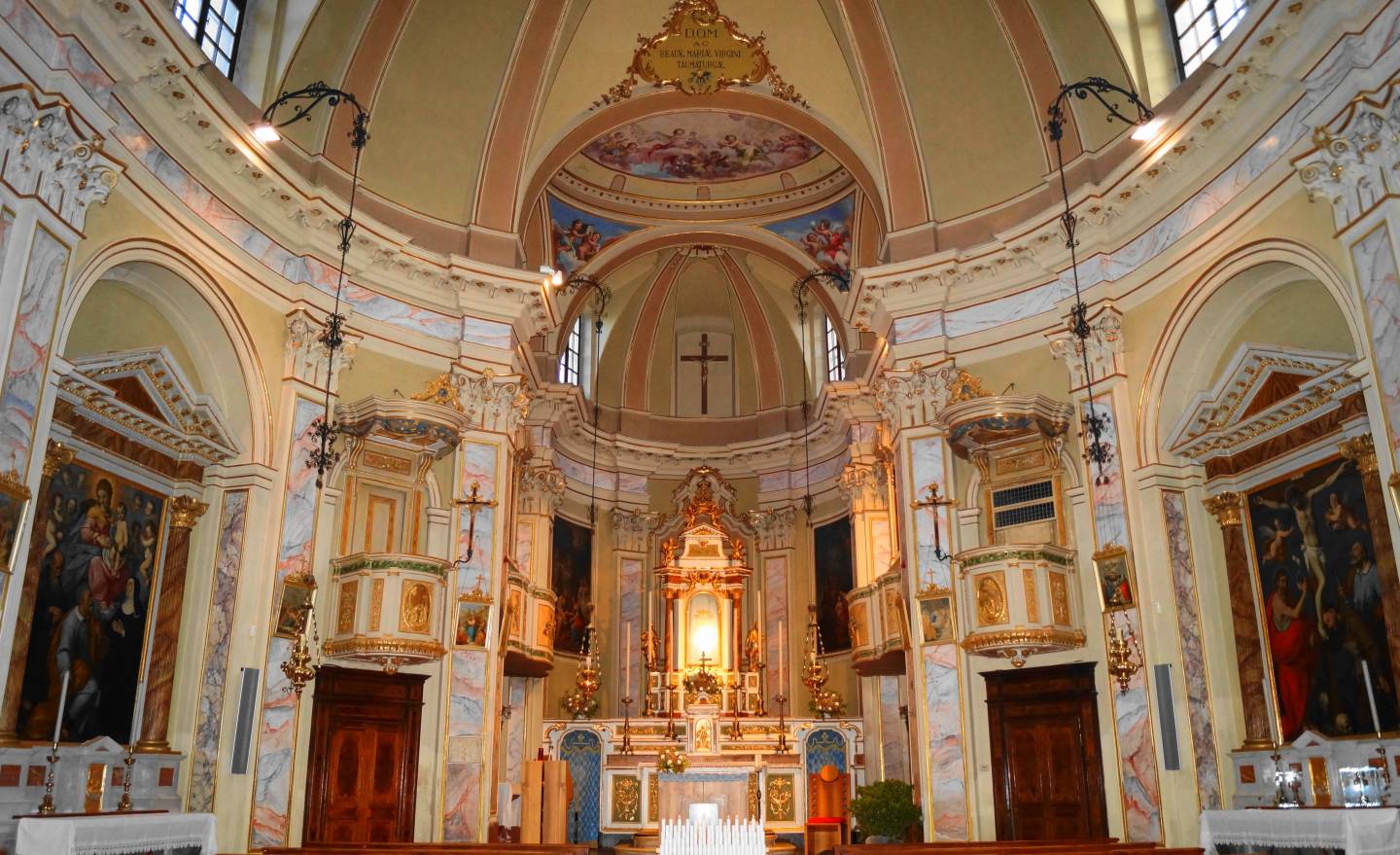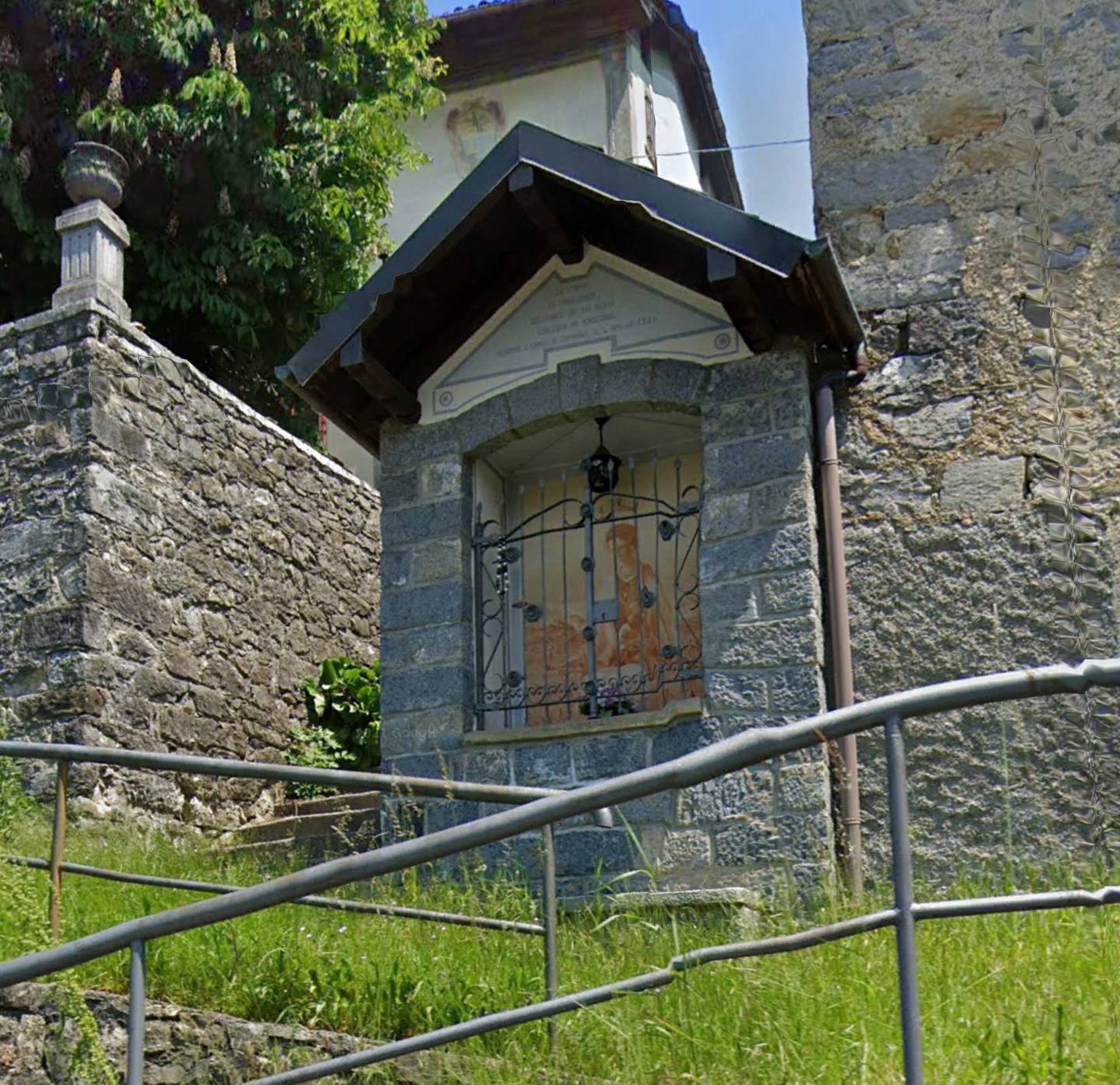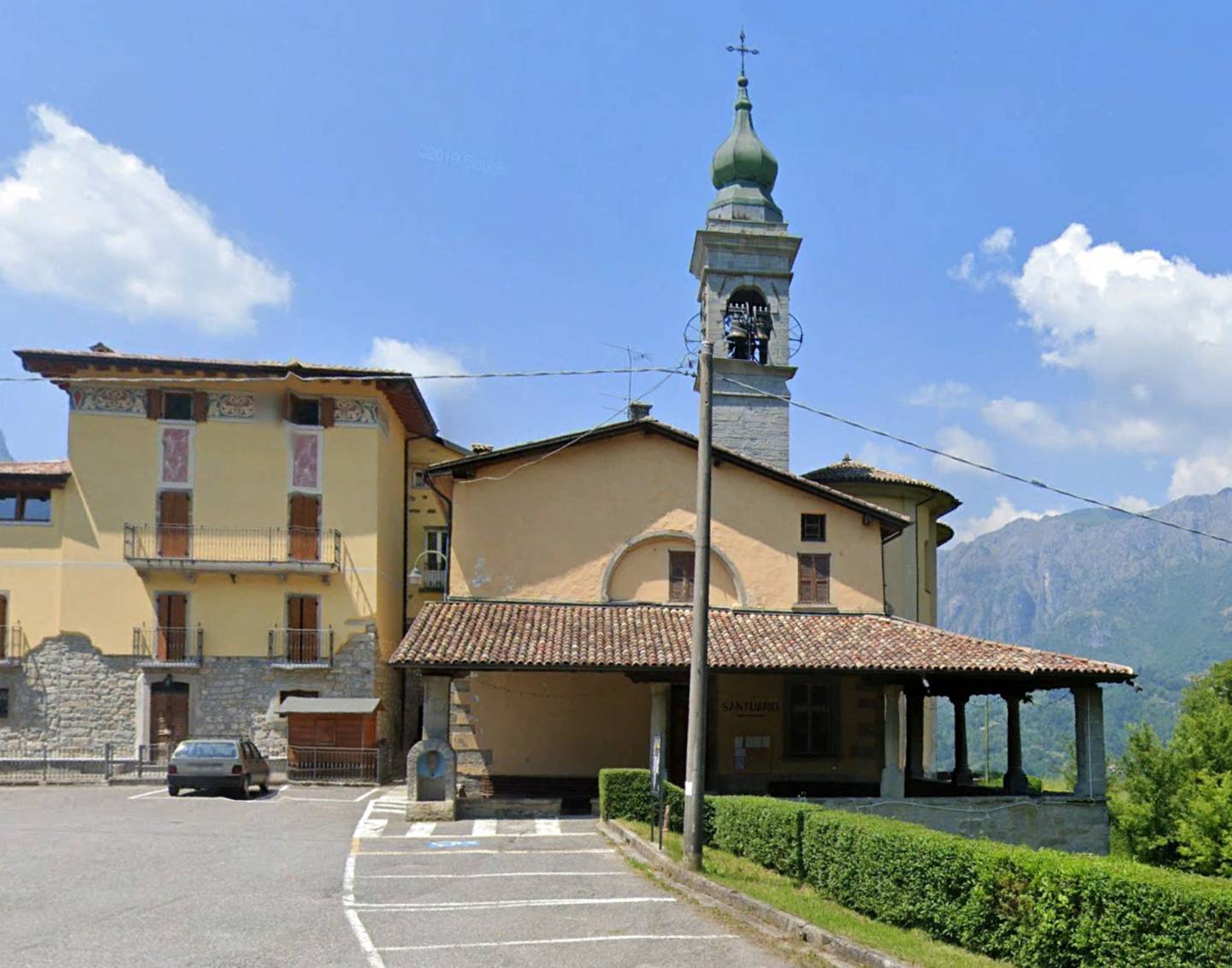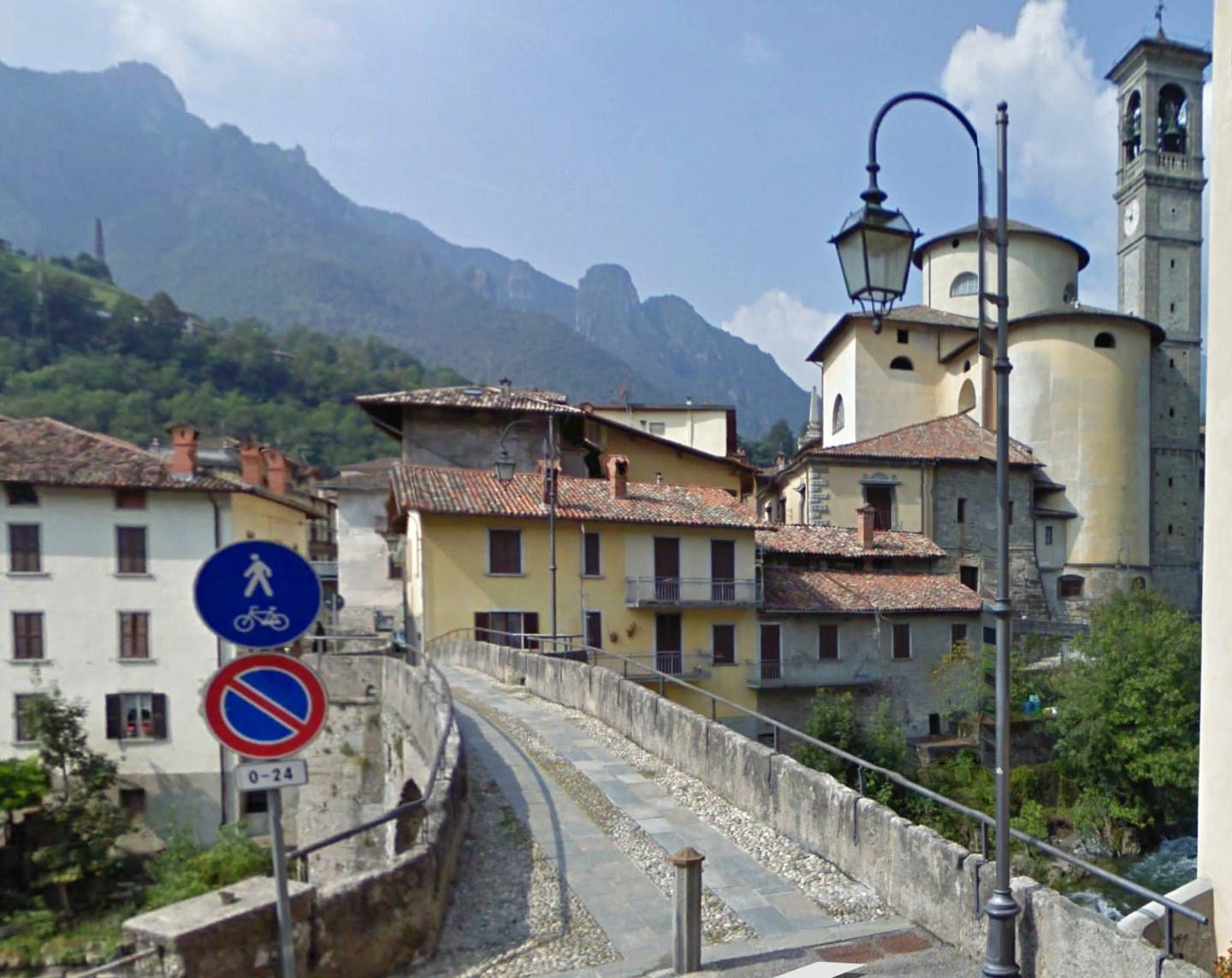The variant of the Mercatorum Way that branches off at Dossena reaches the floor of the Brembo valley at San Giovanni Bianco, after having gone through San Gallo. The ancient route coincides partly with today’s roads. In the section along the Piazzo Valley, there is a lovely stretch of paved mule track, which ends at the recent housing developments in San Giovanni Bianco. The Ponte Vecchio bridge brings this section of the Mercatorum Way onto the same route of the Priula Way hiking itinerary. It is useful to remember that from San Giovanni Bianco to Cornello, the route of the Mercatorum Way follows the path of the Priula Way hiking path. In this case, we are referring to today’s current hiking routes and not the original historic route of the Priula Way, which follows the course of the state road 470.
Tracciato Storico
Itinerario escursionistico
Difficoltà:
The church of Santa Maria Assunta e San Gallo (Saint Mary of the Assumption and Saint Gall) is the principal Catholic church in the hamlet of San Gallo, a district of San Giovanni Bianco in the province and diocese of Bergamo. It has a single nave with side chapels housing the secondary altars with barrel-vaulted ceilings and a semicircular apse. Internally, four pillars support the frescoed vault with an elliptical plan placed at the centre of the nave; another vault, also frescoed but circular in plan, is located above the presbytery. Externally, the façade is restrained; the lower part is protected by a projecting portico supported by four stone pillars; in the upper part, four pilasters, echoing the pillars of the portico, support the entablature on which the tympanum rests. The roof is gabled. At the back, between the lower buildings of the sacristy and a dwelling house, there is the apse with its characteristic semicircular shape.
The church houses the Saint Gall Polyptych by Leonardo Boldrini, dated 1490. Construction took place from 15 August 1828 to 19 October 1840.

A small rural settlement located on the road to San Gallo. There is a notable aristocratic dwelling, on the uphill side, built on terraced land, with a walled garden.

In the year 1492, miraculous events and healings related to a painting of the Virgin holding the Child in her arms were recorded inside a house near the village. It is said that several people benefited from inexplicable miraculous events. This led to the veneration of the effigy of the Virgin Mary. Following the miracle of the painting, a small chapel was built on the north side of the “Miracle Room” on the first floor of the adjacent building. In all likelihood, the “Room” was acquired from the house to which it originally belonged, and it became a place of worship, connected to the newly-built chapel by means of an internal staircase. Many people arrived from neighbouring hamlets and villages, or even from further afield to receive graces or simply for worship. The present-day church, dating back to 1782, has an elliptical ground plan with load-bearing walls divided into rectangular areas by pilasters. The composite Corinthian-order pilasters support the entablature with a cornice from which the frescoed elliptical dome rises. The presbytery, raised by 3 steps, has a rectangular plan, with an ellipsoidal domed ceiling, and on one side the semicircular apse with its respective connecting vault. To the right of the presbytery, a door leads to a hallway which in turn opens onto two rectangular rooms: the sacristy, and next to this, the first chapel, built immediately after the miraculous event, from which a staircase leads to Caterina Lupis’ room. The shape of the church in its current form is also clearly visible externally. The façade looks onto the valley and is a harmonious arrangement: a horizontal cornice divides the two architectural orders, and a tympanum, placed above the second entablature, completes the composition.

Ponte Vecchio – San Giovanni Bianco is built around the confluence of the rivers Brembo and Enna. This has helped shape the town’s conformation, with its narrow streets and long porticoes, but the features that add most to its appearance are the old bridges, with ancient houses bordering the rivers. Ponte Vecchio is the most important bridge, for its history and location. Sited at the centre of the village, it is just a few metres from two other stone bridges that cross the river Enna. The older bridge has just one arch and it is in fact located in the historical part of the town, alongside the 15th-century Palazzo Boselli with its frescoed halls. It has an unusual structure, with two high semi-circular arches, a central pier, and abutments anchored to the rock on either side of the river Brembo. The stone structure is well preserved, with large squared ashlars on the arches and central pier and in rubble masonry for the abutments. The parapet is also in finely-worked stone slabs, which run along the entire perimeter of the bridge. The paving is in cobblestones, with slabs for the central section. From the south, it can be seen with the neoclassical volumes of the parish church of San Giovanni, erected in the 19th century over the previous medieval building.